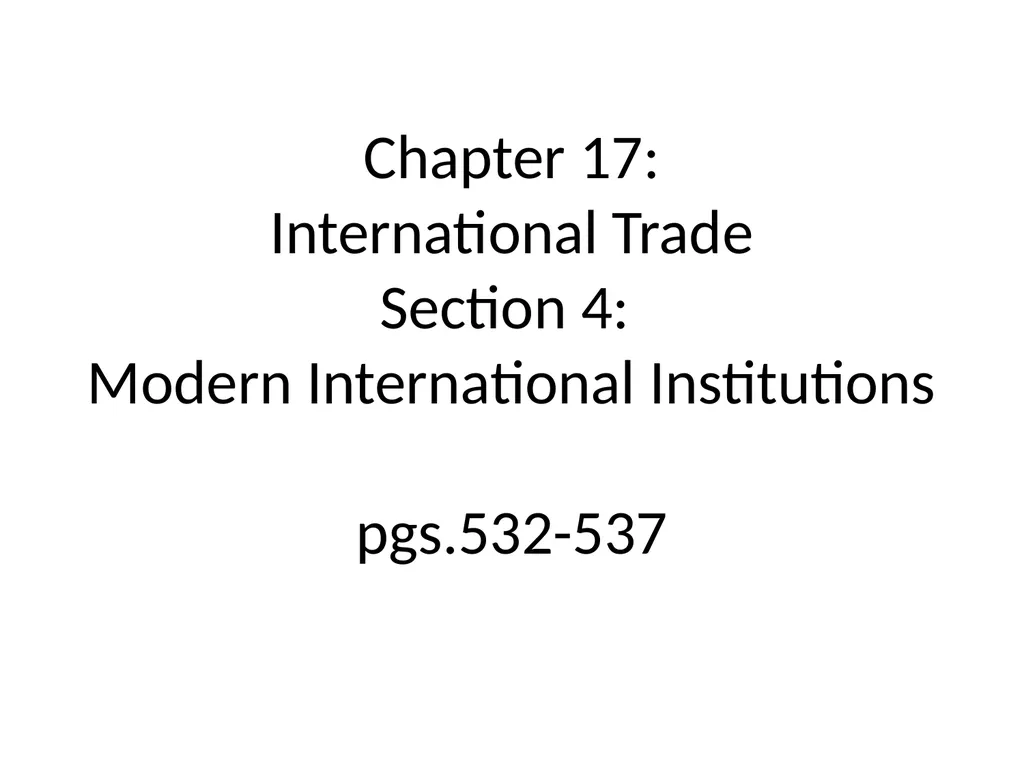
Chapter 17: International Trade Section 4: Modern
Author: alexa-scheidler | Published: 2025-05-24
Description: Chapter 17: International Trade Section 4: Modern International Institutions pgs.532-537 Regional Trading Groups Customs Unions Following the failed protectionist policies of the 1930s, nations have sought to expand trade reduce trade
Download Presentation
Download the PPT/PDF: Download
Transcript:
Loading transcript…